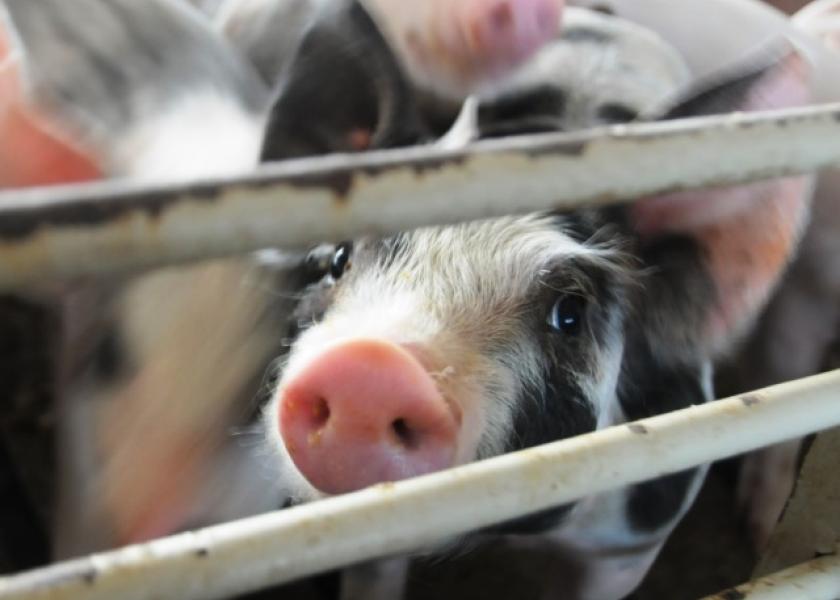Why Collaboration Made All the Difference: SHIC Unveils 2021 Progress Report

Coordination and collaboration. For the U.S. pork industry, those words aren’t hollow. They define perhaps the biggest accomplishment of the industry in 2021.
“The collaboration between the Swine Health Information Center (SHIC), the National Pork Board, the National Pork Producers Council and the American Association of Swine Veterinarians has led to some very effective programs and projects without overlap, and perhaps most importantly, without wasting producer money doing the same thing twice,” says SHIC Executive Director Paul Sundberg, DVM.
And in 2021, with the threat of the deadly African swine fever (ASF) virus crossing into the Western Hemisphere for the first time in four decades, coordination and collaboration made a big difference.
Producers want to know what’s coming when it comes to swine health, Sundberg says. The National Pork Board’s decision to keep SHIC up and running by investing $15 million in it through 2027 is definitely an internal success from the past year, but one that he feels is a success that touches all producers.
“Producers continue to prioritize not only understanding what's coming at us, but also that as an industry, we're prepared for what's coming and that we can prevent it if possible. But if not, at least be ready to respond. That's really what SHIC is all about,” he says.
Each year, SHIC organizes a progress report that offers an in-depth look at the plethora of work done in the past year to address SHIC’s mission of protecting and enhancing the health of the U.S. swine herd through coordinated global disease monitoring, targeted research investments that minimize the impact of future disease threats, and analysis of swine health data.
Sundberg shared some of the top-of-mind programs that he believes were especially impactful in 2021.
1. SHIC’s Rapid Response Program
The Rapid Response Program is designed for epidemiological investigations of transboundary or newly emerging swine diseases to help investigate potential emerging disease occurrences.
“We used the Rapid Response Program in 2021 multiple times to investigate PRRS outbreaks, especially this porcine reproductive and respiratory syndrome (PRRS) 1-4-4 1C outbreak, to try to figure out how it's getting from farm to farm. We’ve also used it in some porcine epidemic diarrhea (PED) outbreaks,” Sundberg says.
Being able to deploy people to investigate outbreaks rapidly within 72 hours after they are invited on the farm has been crucial, he points out.
“We know that's our best chance to be able to find out why things get onto farms,” Sundberg adds.
2. Diagnostic Fee Support
In outbreaks resulting in high morbidity/high mortality, where an etiology is either not identified or there is a strong supposition the identified pathogen is not the likely cause of the outbreak, there may be a need for further diagnostic work. In these cases, support for the fees of further diagnostic work may help identify newly introduced or emerging swine diseases. SHIC offers funding for additional diagnostic testing in approved cases.
“We had issues with E.coli and gut edema disease that we investigated in 2021. There was an outbreak of vesicles on multiple farms for which the diagnostic labs initially couldn’t find an answer. And we are following up on an unknown cause for an abortion storm on a farm. This is a program producers should know they have the ability to tap into if they need additional diagnostic fee assistance,” Sundberg says.
3. Global and Domestic Disease Monitoring Reports
SHIC’s Global Swine Disease Monitoring Report provides near real-time information on disease occurrence and movement internationally, a particularly valuable resource for African swine fever monitoring. The Swine Disease Reporting System provides information on prevalent domestic swine disease movement and occurrence based on veterinary diagnostic lab data.
“These reports always get a lot of attention and clicks in our newsletter,” Sundberg says. “We did some enhancement of those reports in 2021 and that is going to continue in 2022.”
4. ASF Prevention and Preparation
The outbreak of African swine fever (ASF) in the Dominican Republic in 2021, brought all of the swine organizations together with USDA interacting and doing everything possible to keep ASF out of the U.S. They worked cohesively on communications, programs and research to gain more knowledge and information.
“We're better than we were in 2018 when ASF was discovered in China, and we're probably not as good as we're going to be in 2022 because it's always a work in progress,” he says.
Read the full 42-page SHIC 2021 Progress Report here.
Read More:
Why the U.S. Pork Industry Won’t Forget 2021
Close All the Windows to Keep ASF Out
ASF in the Western Hemisphere: What’s Different 40 Years Later?
It's Time to Batten Down the Hatches, Pork Industry Experts Say
Learn more about what the industry is doing to prevent ASF from entering the country.







